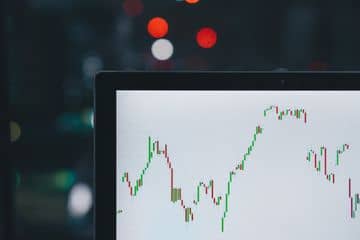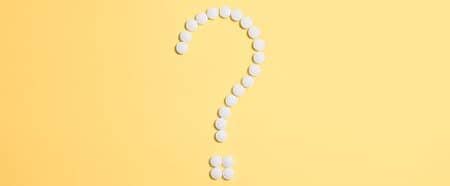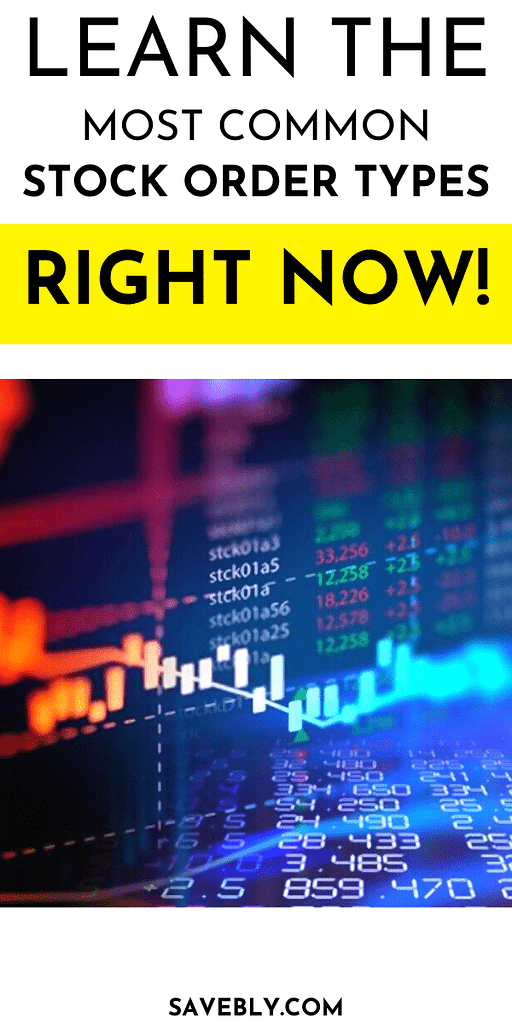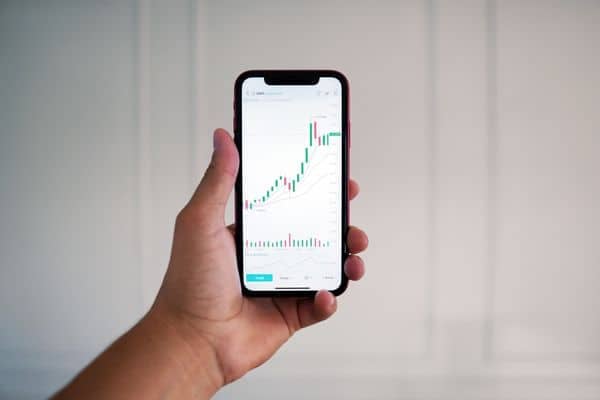Common Stock Order Types (What You Need To Know)
If you are looking for the most common stock order types, then you’ve come to the right place.
In this article, you will learn about common and advanced stock order types to see which one is right for you to use.
Financial markets are full of buyers and sellers that are constantly trading securities.
The transactions are conducted through several different order types. They can be used when trading stocks, commodities, futures, currencies, and other financial instruments.
Traders should get familiar with all the trading order types and know when/how to use them.
This article will cover all of the different types of stock market orders and how they’re typically used in trading.
However, some of them may not be available depending on the stock brokerage you use, so keep this in mind.
Let’s get into the most used stock order types by investors as well as advanced order types…
The Most Common Order Types For Stocks

There are two commonly used stock order types, which are market order and limit order; these are used most of the time, especially for beginner investors.
These stock order types are the easiest to understand and use and will meet your needs 99% of the time.
Let’s dig deeper into these options for investors…
Market Order
A market order will buy or sell at or near the current market price. The order type is intended for immediate execution and doesn’t guarantee the best price.
A market sell order will execute at whatever price buyers are willing to pay (the bid). A market buy order will execute at whatever price sellers are willing to sell at (the ask).
- A market order is the quickest way to buy or sell.
- You risk unfavorable price changes known as slippage.
- Low-volume markets can cause orders to fill at drastically different prices.
A market order is one of the best options for most active investors to buy and sell stocks!
Limit Order
A limit order allows a trader to sell or buy at a specified price. Essentially a limit order is the opposite of a market order. You choose the price instead of the market.
The catch is your limit order may not get filled. If you place a limit order that is far outside the current trading price, the chances of it getting filled are unlikely.
For example, a stock is trading at $45 per share. If you want to buy it at $40 per share, a limit order at $40 per share will only fill if the price drops to $40 or lower.
The chances of this happening depend on the current price action and market conditions.
Limit orders can also fill at better prices than what you set them at. For example, you place a limit order to sell your shares at $50 per share. If the price moves up fast enough and the shares blow past $50, you can get a fill at a higher price.
A limit order will never execute at a worse price than you have set. For example, if you want to buy at $40, it could fill at $38 but will never fill above $40. If you’re going to sell at $50, it could fill at $53 but will never fill below $50.
- Limit orders allow you to buy or sell at a specific price.
- Execution of a limit order depends on market activity and the price you set.
- You risk the chance of never getting your order filled.
- Also called buy-limit and sell-limit orders.
Advanced Stock Market Orders Types

If you want some more control in the buying and selling process of stocks, then there are some more advanced stock order types that you can use.
While these are not as common as the types above, they are not difficult to use or understand, so let’s check them out…
Stop-Loss Order
Stop-loss orders are designed to limit losses on a position. A stop-loss order will execute as a market order if the stock price drops below a specified amount.
A stop-loss can be used to protect long and short positions. If shorting a stock, the stop-loss (technically a buy stop) will buy to cover instead of sell like in a long position.
For example, you are long a stock at $40 per share. You set your stop-loss at $38. If the stock price drops to $38, your position is sold as a market order. The market order is at the mercy of the current market price, and you could get filled below $38.
- Traders can limit their losses with a stop-loss order.
- Because a stop loss executes as a market order, you can experience slippage (may execute at a worse or better price than your stop).
- Stop-loss orders work for both long and short positions.
Buy Stop Order
A buy stop is the order type used to limit losses in a short position. They can also be used to purchase stocks and open a new position.
Traders will often believe that a stock will continue to go up once a certain price level is reached. To capture this price movement, they’ll typically use a buy-stop order.
For example, you want to buy a stock if the price reaches $50 per share. You set a buy stop at $50 per share. If the price reaches $50, your order will execute as a market order. This means it will fill at the current market price, which can be above or below $50.
- A buy stop is a market order that executes once a certain price level is reached.
- Used to limit losses for short positions.
- Used to open new positions once a share hits a higher price level.
Stop-Limit Order
A stop-limit order is similar to a stop-loss but executes as a limit order instead of a market order. Traders can also use a stop-limit order to buy and open a new position.
The order works by defining two prices, your stop price and the limit order price. The stop price triggers the limit order.
For example, you are long a stock at $40 per share. You set a stop price at $38 and a limit order at $36. If the price drops to $38, the limit order of $36 becomes active.
Meaning you want to stop your loss if the stock price reaches $36. If the price drops below $36, your order may not be filled.
Traders may also use a stop-limit order to buy shares, just like a buy-stop order. For example, a stock is valued at $20 per share, and a trader wants to buy if it hits $25 but doesn’t want to pay more than $26.
This can be accomplished by setting a stop price of $25 and a limit price of $26. The order will be filled if the stock price does not increase above $26 before it can execute.
- Stop-limit orders are a combination of a stop and limit order.
- You have more control over the execution price vs. a regular stop order.
- It can be used to limit losses, lock in profits, or open a new position.
- Because it uses a limit order, it is not guaranteed to execute.
Trailing Stop Order
A trailing stop order is designed to lock in profits or limit losses if the trade goes in another direction.
The stop order is set at a fixed amount or percentage away from the current market price. The stop is placed below the current market price for a long position and above for a short position.
The stop order adjusts if the price moves in a favorable direction. This is why it is called a “trailing” stop. Suppose you have a long position. The stop price rises as the market price rises but doesn’t move if the price begins to fall.
For example, you are long a stock at $35 per share, and you put a 5% trailing stop on your position. If the price falls 5% to $33.25, the stop will execute a market or limit order to close your position.
But say the stock price rises to $40 per share, and your 5% trailing stop moves up. So now, if the price drops 5% from $40 to $38, your stop will execute a market or limit order.
- A fixed dollar amount or percentage is set to trail the market price.
- A trailing stop can be set using a market or limit order.
- Trailing stops are great for maximizing profits in a winning trade.
- The stop price will only move if the market price moves in a favorable direction.
Market-If-Touched (MIT) Order
A market-if-touched order executes a market order if the price reaches a stipulated level. It sounds like a stop-loss or stop-buy order, right? They are similar, but the difference between the two types is how the trigger price is set.
A stop-loss is set below the current market price, whereas an MIT sell order is placed above the current market price.
The MIT sell order is typically used to enter a short position, whereas the stop-loss limits losses on a long position.
A buy stop is placed above the current market price; an MIT buy is placed below the current market price. An MIT buy order is used to enter a long position. If the price drops to a certain price level, it will trigger a market order.
- MIT sell orders are usually used to enter short positions.
- MIT buy orders are generally used to enter long positions.
- MIT orders execute a market order once the specified price level is reached.
- Market-if-touched orders are essentially the inverse of stop orders.
Limit-If-Touched (LIT) Order
A limit-if-touched order is like an MIT order, except that the trigger price executes a limit order instead of a market order.
If a share reaches a predetermined price level, it will trigger a limit order. Because it uses a limit order, it is not guaranteed to be filled.
For example, you enter a LIT order to enter a long position with a trigger price of $45 and a limit price of $44. The price drops to $45 and activates your limit order. The order will only get filled if the price continues to fall to $44.
Like MIT orders, LIT sell orders are placed above the current market price, and LIT buy orders are set below the current market price.
- LIT orders have the same benefits as MIT orders but with more control over what stock price you will buy or sell at.
- Because LIT orders use a limit order, they are not guaranteed to be filled.
Bracket Orders
Bracket orders use multiple opposing orders to both lock in gains and limit your losses on a trade. Bracket or bracketed orders can be used for both long and short positions.
Typically, a trader will enter a position and then later set a stop-loss or limit order to take profits. A stop-loss and sell limit order is automatically attached to a bracket order.
The trader will need to determine three prices. First, the price to enter the position (the buy order), the price to sell if prices drop (stop-loss), and the price to take profits (the sell-limit).
There are also bracket orders consisting of a stop-loss and take-profit order for positions you have already entered.
- Bracket orders are a cluster of orders that are specified and set at the same time.
- Bracket orders allow traders to set a stop and take profit orders simultaneously.
D-Limit Order
A D-limit order stands for discretionary limit order. It is a unique order type designed by IEX with the purpose of protecting retail traders from high-frequency traders (HFT).
It uses innovative technology to protect the order from unfavorable stock price changes.
- D-limit orders use AI to strengthen price protection from latency arbitrage.
- You will need to route trades through the Investors Exchange (IEX) to use them.
One-Triggers-The-Other (OTO) and One-Cancels-The Other (OCO)
One triggers the other orders are contingent on orders that use a primary and secondary order. When one order executes, it triggers the other.
For example, you place a buy order for a stock and a stop-loss. The stop-loss is triggered if your buy order is filled. This saves you from having to manually set a stop after entering the position.
One cancels the other orders using a pair of orders. If one order is filled, the other is canceled. For example, if you set a sell limit and a stop-loss order on a position and the sell limit is executed, the stop-loss is automatically canceled.
- Bracket orders are considered a type of OTO and/or OCO order.
- OTO and OCO orders are a pair or clusters of conditional orders contingent on one another.
Market-On-Close (MOC) Order
A market-on-close order is precisely as it is named–a market order that executes at or near the market close. Traders that place a MOC order want to buy or sell at the trading day’s last obtainable price.
- Market on close orders buy or sell at the last available price at the market close and can be executed shortly after the close.
- For the New York Stock Exchange (NYSE), MOC orders must be submitted by 3:45 PM EST.
- For the NASDAQ, MOC orders need to be entered by 3:50 PM EST.
- After the cut-off time, the exchanges do not allow MOC orders to be canceled or modified.
Market-On-Open Order (MOO)
A market-on-open order is just like a MOC order but executes at market open instead of close. A trader will place a MOO order to buy or sell a security at the soonest available price.
- Market on open orders executes at or shortly after the trading session begins.
- MOO orders are placed when the market is closed and must be placed at least two minutes before opening (9:28 AM EST).
What Is Time In Force In Stocks? (TIF)
When placing any order, a time in force is required. Time in force specifies how long an order will remain open before it is filled or expires. Basically, TIF indicates the order duration.
Here is the primary time-in-force options:
- RTH Day Order: will expire at the end of regular trading hours if unexecuted.
- ETH Day Order: expires at the end of extended trading hours if unexecuted.
- Good ‘Til Canceled (GTC): Order will remain active until filled or canceled. The maximum amount of time a GTC can stay open is typically 90 days.
- Immediate Or Cancel Order (IOC): an immediate or cancel order will cancel if it cannot execute immediately. A portion of the order could get filled while the rest will be canceled.
- All Or None (AON): All or none orders attempt to buy or sell a complete order. The order will cancel at market close if it’s unable to be completed, preventing partial fills.
- Fill Or Kill (FOK): A fill or kill order attempts to execute immediately and in its entirety. If it can’t, it will be canceled. It’s basically a combination of an AON and IOC order.
What Stock Market Order Type Should You Use?

There is not a single order type that is best for all trading situations. The more you understand how the different orders work, the better you can decide when to use them.
For beginner investors, it is probably best to use limit orders and avoid market orders.
Market orders can give you less-than-desirable fills and should be used with caution or when stopping a loss.
You can also consider demo trading for investors to get a feel for how they all function.
Conclusion
Now you know about the most used stock order types as well as some advanced stock market orders.
There are several different order types that a trader can choose from. Not all brokers offer the same types, and the process of setting them up will vary.
Be sure to get familiar with the order types provided by your broker and how to set them up before entering trades.
You will need to evaluate each trade and the current market conditions to determine the best order type to use. Trading volume (liquidity) should also be considered. You will get used to them the more your trade and see how they work in real-time.
If you like this post, then I recommend checking out my posts on Characteristics Of Investors: How To Become A Successful Investor and Seasonal Investing: What It Is & How It Works.
What stock order types do you use? Let me know in the comments below!






